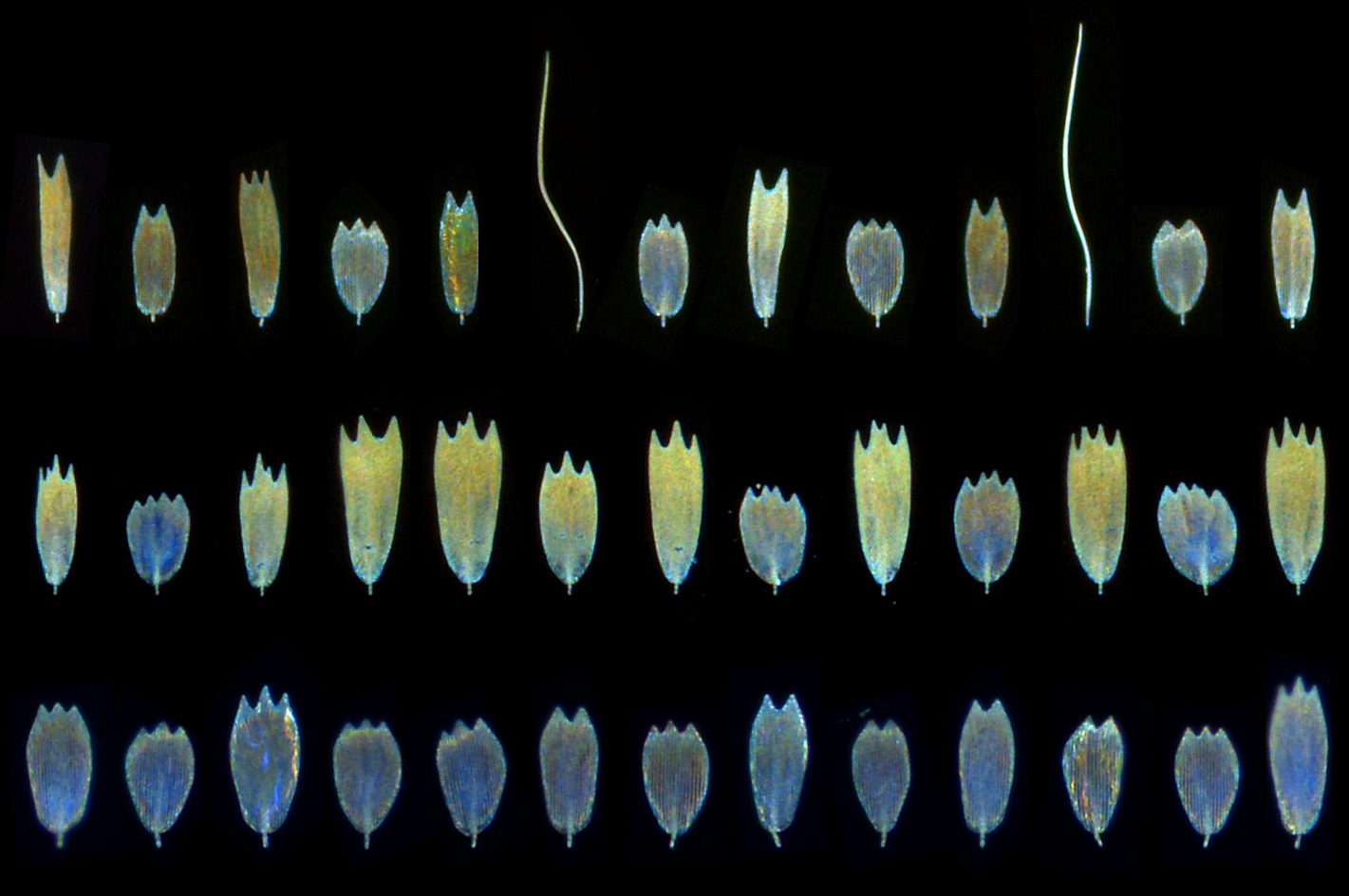Butterfly wings, breathing viruses, and breakthrough devices
Science and technology are the cornerstones of developing solutions for modern world challenges, and deriving innovations that can improve the lives. In the last century, curiosity-driven research has brought about revolutionary transformations, such as the World Wide Web, which was originally built to automate information-sharing between scientists around the world, as well as theoretical physicist Albert Einstein’s theory of relativity that is now commonly used in GPS devices.
At NUS, scientists are conducting cutting-edge fundamental research with the aim of translating novel discoveries into practical applications to solve pressing real-world problems. This article shines the spotlight on the work of three multidisciplinary teams led by NUS scientists.
These three projects are funded by National Research Foundation Singapore’s Competitive Research Programme (CRP), a scheme that allows multidisciplinary teams to conduct cutting-edge research projects that are of relevance to Singapore. The aim of the research project is to be motivated by an important problem that needs to be solved. The discoveries from CRP projects will hopefully have significant impacts on industry and society as a whole.
Uncovering how butterflies get their colours
Have you ever wondered where butterflies get their colours from? The answer is surprisingly complex, but it can open the door to developing coloured materials that are biodegradable and non-toxic.
Butterfly wings are covered by millions of dead wing scale cells that are made of a rigid substance called chitin. These scales are responsible for producing the wings’ striking iridescent colours, but do so in several different ways. Professor Antónia Monteiro, who is from NUS Biological Sciences and Yale-NUS, and her team want to understand the mechanisms behind these beautiful colours.
With her team, Prof Monteiro brings together biologists, physicists and material engineers. “Butterfly wing scales are some of the most complex cells in the living world. We would like to understand how these cells produce bright iridescent colours, from a genetic, physical, and materials perspective,” she said.
One of the team’s goals is to reproduce some of the butterfly's brilliant colours in the lab, using non-toxic, biodegradable polymers, such as chitosan. So far, the team has produced materials that are biodegradable and non-toxic, and could eventually be used in a variety of industries, such as in cosmetics or food production.
Another goal of the team is to investigate the multiple ways butterflies have evolved certain colours, from the perspective of the scale’s skeleton architecture. “We have been able to mill down very thin layers of chitin from individual scales, and discovered the optical functions of each of the layers in isolation, and how they contribute to the final colour and optical properties of a scale,” Prof Monteiro explained. The researchers subsequently produced a variety of structurally coloured materials in the lab by using a nano-printing method, a shrinking method, as well as a casting method for the polymer chitosan.
A more fundamental goal for Prof Monteiro and her team is to study how genes regulate scale development, and in turn build their extremely complex chitinous skeletons that produce colour. The team has discovered a variety of genes that, when disrupted, alter the colour as well as the shape of wing scales. They found that butterflies have evolved five distinct ways to produce blue and green iridescent colours across their radiation.

“We are the first lab in the world to perform a focused investigation surrounding the genes that are expressed in individual butterfly wing scale cells, using single-cell sequencing,” elaborated Prof Monteiro.
This basic research could eventually lead to the production of colourful scale cells in a petri dish, from insect epidermal stem cells, for a more economical harvest of their extremely complex skeletons with very interesting optical properties.
The next step for the researchers is to visualise the development of a scale cell, and test the role of more genes in scale development. The team is also modelling the optical properties of some of the more complex scales in order to investigate key colour-producing morphologies, as well as experiment with additional methods of producing coloured chitosan with different optical properties.
Disrupting how viruses ‘breathe’ for quicker treatment strategies
Epitopes are the specific parts of viruses that are recognised by our immune systems' antibodies. For example, with coronavirus, epitopes are located on the spike proteins of the "crown". However, current research indicates that not all epitopes are easily identified on the surface of viruses. This is because viruses are dynamic and there are hidden epitopes that are exposed only intermittently.
To tackle this, Associate Professor Ganesh Anand who was from NUS Biological Sciences and his team have developed a way to identify these hidden epitopes, which could provide new strategies to incapacitate viruses. “In this project, we aim to monitor virus dynamics and find new strategies to quickly and reliably identify viral epitopes that can be targeted for intervention in viral infections,” said Assoc Prof Anand. The team specifically targeted flaviviruses that included dengue, zika and yellow fever among other serious human pathogens.

The researchers combined state-of-the-art techniques, including amide hydrogen-deuterium exchange mass spectrometry, computational modelling, single particle fluorescence spectroscopy, and immunological approaches in combination with cryo-electron microscopy of viruses. With this new combination of powerful techniques, the team can identify novel epitopes and produce new antibodies that can have high potency.
“Viruses are not static targets but continuously fluctuate in solution in a method referred to as ‘breathing’. Each virus has a different breathing signature. Our work has identified the principles governing virus breathing and how antibodies disrupt these,” explained Assoc Prof Anand.
From these ‘breathing viruses’, the researchers have identified a small set of important epitopes. Targeting these with antibodies could lead to more complete identification of these epitopes and make the development of treatment strategies quicker, leading to accelerated vaccine development. The researchers’ next steps are to translate the identified epitopes into antibodies and then prove them to be clinically effective.
Groundbreaking energy-efficient devices
Electronic and optical devices have become a major part of our daily life. Some components, like the transistors in central processing units smart devices, or switches in optical-communication networks used around the world, need to be switched between the on-off states to function. However, when these components switch on and off, there is a large amount of energy consumed, which leads them to be costly and can limit their performance.
For this reason, Associate Professor Ariando from NUS Physics and his team are looking to come up with more efficient components which are low-cost, and at the same time, have extremely low energy consumption while being resilient to power interruptions.
“We have discovered materials and developed devices with properties superior to any similar device available today. Our devices, for example, can be switched with energy 100,000 times smaller than what is currently on offer commercially,” Assoc Prof Ariando said.
These electronic and optical switching devices, with their ultralow energy switching, have also improved performance by many orders of magnitude. The researchers made this breakthrough by focussing their efforts on increasing energy efficiency in the operation of the device, and by developing novel materials to achieve this objective.
“Typically, the materials need to exhibit multi-functionalities, which are not found in conventional semiconductors, so we developed complex oxides, transition metal azo complexes, and more that are also compatible with complementary metal–oxide–semiconductors (or CMOS). Research on novel functional materials was therefore central in our project,” explained Assoc Prof Ariando.
The next step for the researchers is to develop and apply these devices further. “We plan to make brain-inspired devices for developing energy-efficient hardware platforms for artificial intelligence. In addition, we would eventually like to commercialise these devices to integrate with current semiconductor technology,” said Assoc Prof Ariando.




